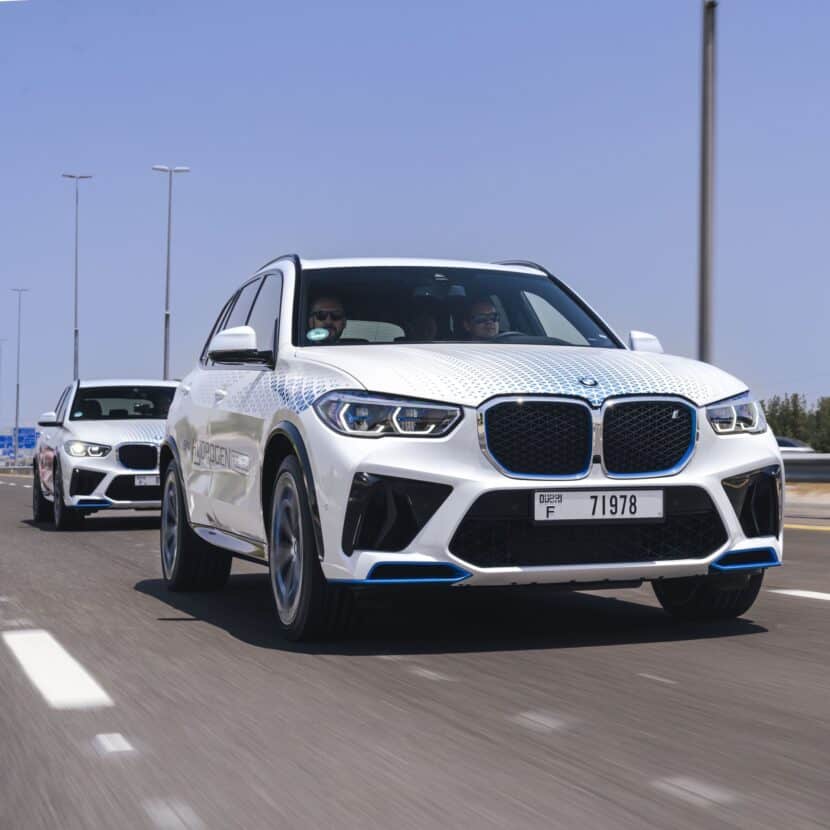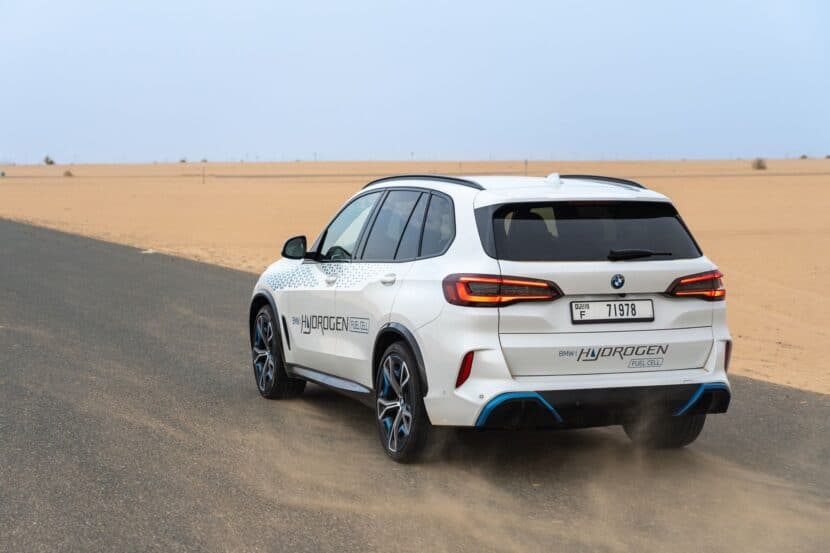The BMW iX5 Hydrogen pilot fleet, introduced in February, recently completed a rigorous round of hot-weather testing in the United Arab Emirates. Facing scorching temperatures reaching up to 45°C, sand and dust, varying gradients, and humidity fluctuations, the car’s fuel cell drive system was put through a real life driving test. The BMW iX5 Hydrogen pilot fleet is currently in operation across Europe, Japan, Korea, China, the USA, and the Middle East. This worldwide deployment aims to highlight the everyday usability of hydrogen-powered vehicles while collecting crucial insights for the potential production of a series model.
401 Horsepower
The latest iteration of the iX5 comes with a significant power boost, now delivering an impressive 401 horsepower, a 31-horsepower increase from its previous version. This enhanced power translates into swift acceleration, with the ability to sprint from 0 to 62 mph (0 to 100 km/h) in under six seconds and reach a top speed of 115 mph (185 km/h). In response to driver demand, BMW has introduced a Sport mode for this model, unlocking the full power potential and simultaneously optimizing handling by stiffening the suspension. This addition promises an even more engaging driving experience.
When it comes to refueling, the iX5’s hydrogen tanks can be replenished in approximately three to five minutes, a process comparable to refueling a conventional gasoline or diesel vehicle. Of course, the global charging infrastructure is still the biggest hurdle in the fast adoption of hydrogen-powered vehicles.
As with the conventionally powered model, the vehicle is built in Spartanburg, South Carolina but the necessary modifications are carried out in Munich. The maximum range has been estimated at 310 miles (500 kilometers).
Only five iX5 units are headed to the US by the end of this year as part of the global pilot program. BMW says these are technically experimental prototypes, which means they can’t be sold. Instead, the vehicles will be handed over temporarily to members of the media as well as stakeholders to test the technology in real-world driving conditions.


